The official Thai history has had four dynasties, with the current one still going strong and loved by the people. While Sukhothai, the first kingdom, was more distant and disconnected from the rest, the second (Ayutthaya), third (Thonburi), and fourth (Rattanakosin) were of a single lineage. The capitals of the latter two are both within present-day Bangkok, and Ayutthaya is two hours by car to the north. Once the center of the greatest kingdom in Southeast Asia, Ayutthaya makes a fantastic day-trip from Bangkok.
Ayutthaya, for tourism purposes, is like a mini Angkor Wat. Both are former capitals of powerful kingdoms, and both are famous for their Khmer style Buddhist temples. While the latter was merely abandoned after the downfall of the Angkor Kingdom, however, the former was destroyed and burned to the ground by the invading Burmese army. As such, even though Ayutthaya was far more recently inhabited, what remains to be seen today is more limited.
Joined by my sister and Chee Seng, we took the luxury route of seeing Ayutthaya with a hired driver. Not only did it get us there and back more quickly and more comfortably than other options, it also afforded us the flexibility to take the scenic yummy route.
Khlong Lat Mayom Weekend Floating Market
None of us wanted to spend all day under the sun while running on empty stomachs. Therefore, we planned for a major food heaven as our first destination of the day. Khlong Lat Mayom, situated far on the west side of Bangkok, was a “floating market” popular among hungry locals and open only during the weekends. The term “floating market” referred to how economic activities used to take place on boats, back in the days when the lifestyle in Bangkok predominantly took place on its many canals. While Khlong Lat Mayom still sat by a major canal (literally it is the name of the canal – “khlong” means canal in Thai), most of the market now was on land.
Even though we had done research ahead of time and knew that Khlong Lat Mayom spanned a vast area, seeing its expansiveness still put us in awe. The endless stalls of food vendors were taunting our appetite, and our senses were overwhelmed by the sight, sound, and smell of all the delicious food items. We bought stuff from 8-10 stalls (including a boat), and ate in the approximate order of entrée-dessert-fruit-entrée-appetizer-dessert. By the time we were too full to continue, we brought a big bag to munch on in the van.
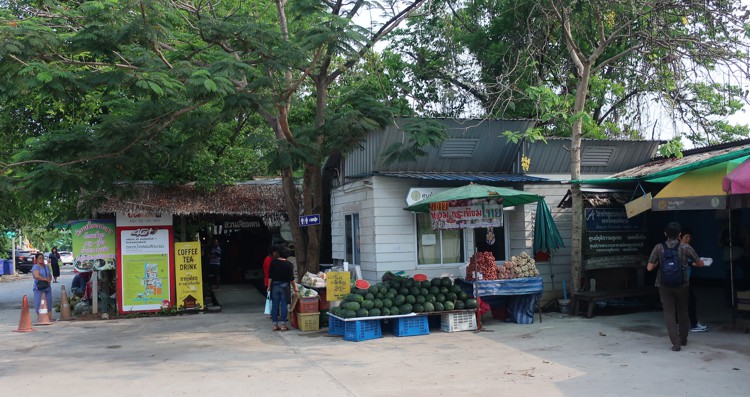
Landing spot of Khlong Lat Mayom
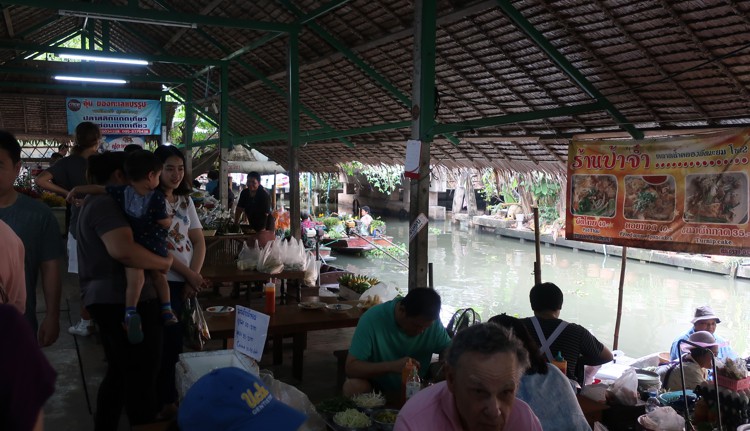
Lots of tables and busy diners
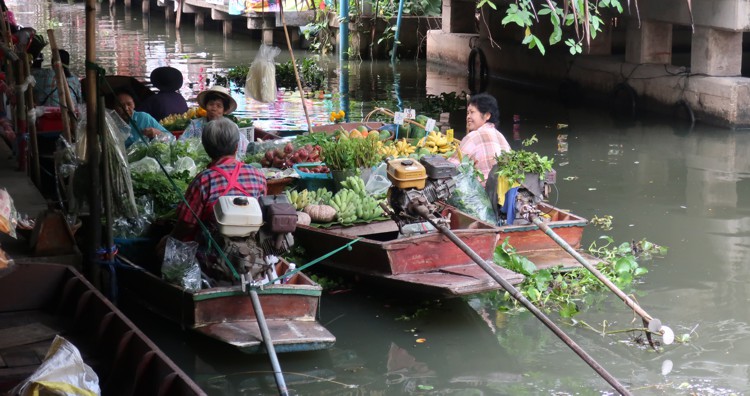
Fruit & veggie vendors in boats

Pan-frying auntie on a boat. To honor the “floating” part of this floating market, we bought two dishes from her
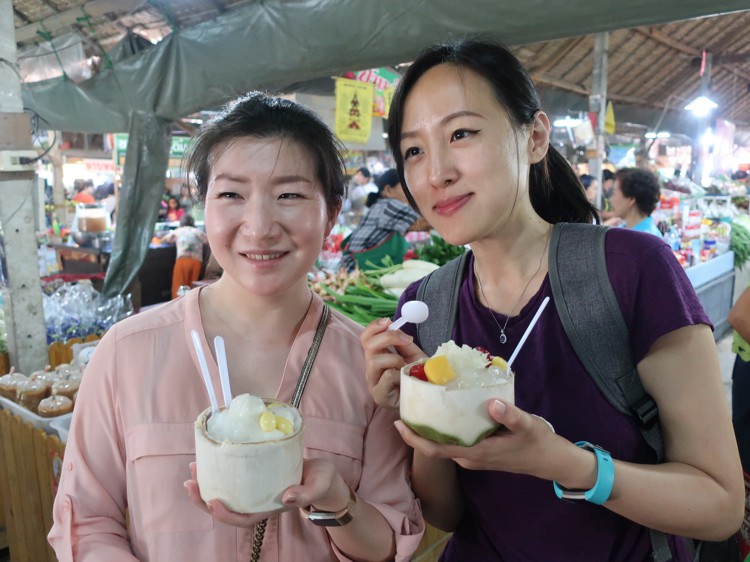
Hong and Ariel eating coconut ice cream (in real coconut shells topped with Southeast Asian toppings)
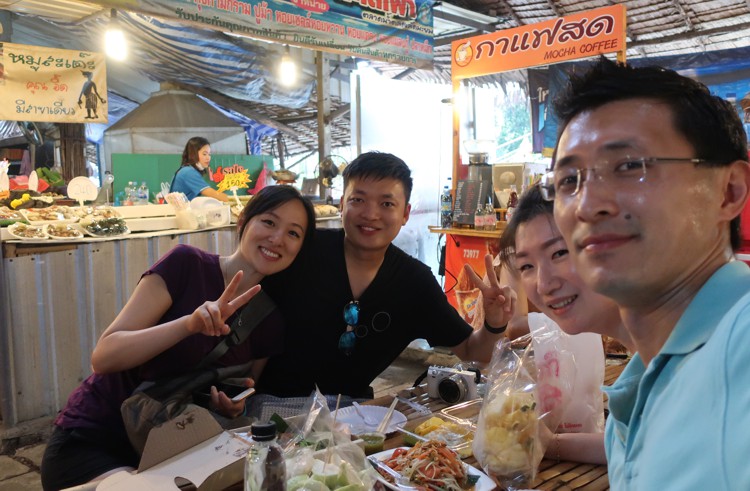
Man vs Food the four-people edition
Ayutthaya: Wat Maha That
Two hours later, we arrived in Ayutthaya at the hottest time of the day. Our first stop was Wat Maha That, one of the most famous temples in Ayutthaya with the head-in-tree Buddha image. Built 644 years ago by the Ayutthaya Kingdom’s founding king, it was destroyed 400 years later along with everything else in town. The severed Buddha statue head fell on the ground and was later picked up by the tree roots.
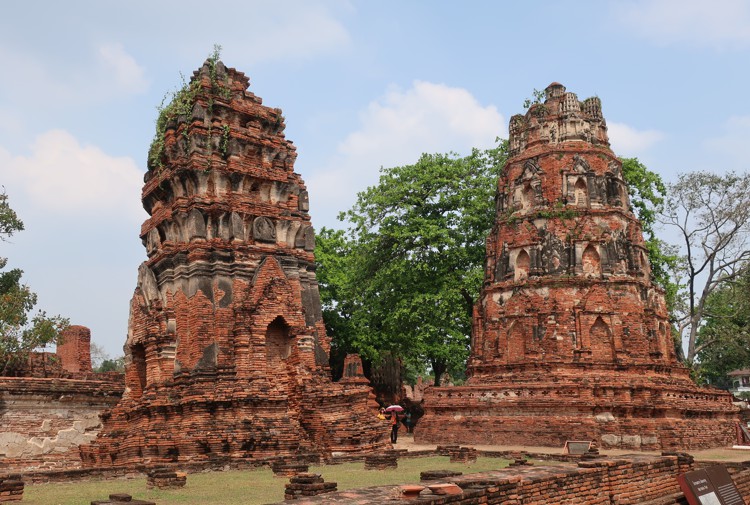
Wat Maha That
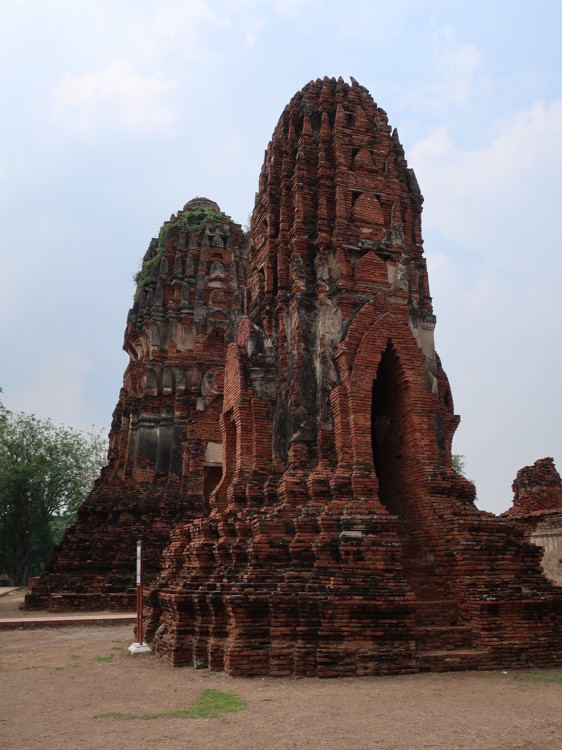
Wat Maha That
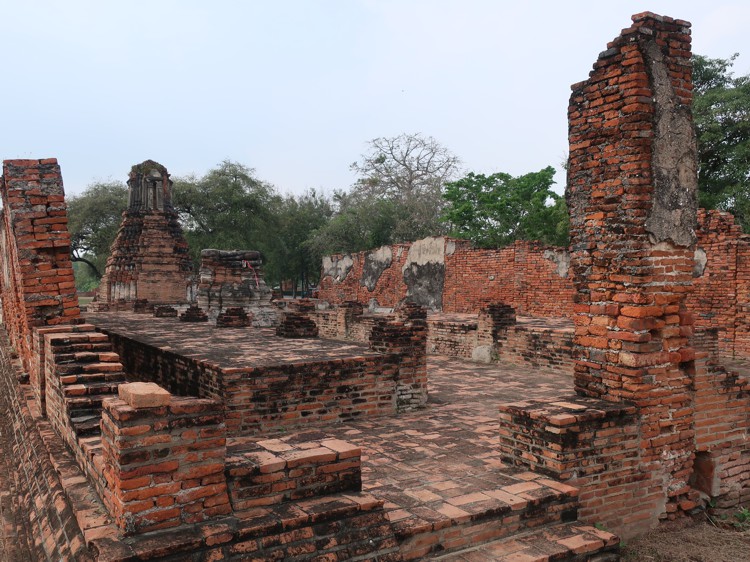
Wat Maha That
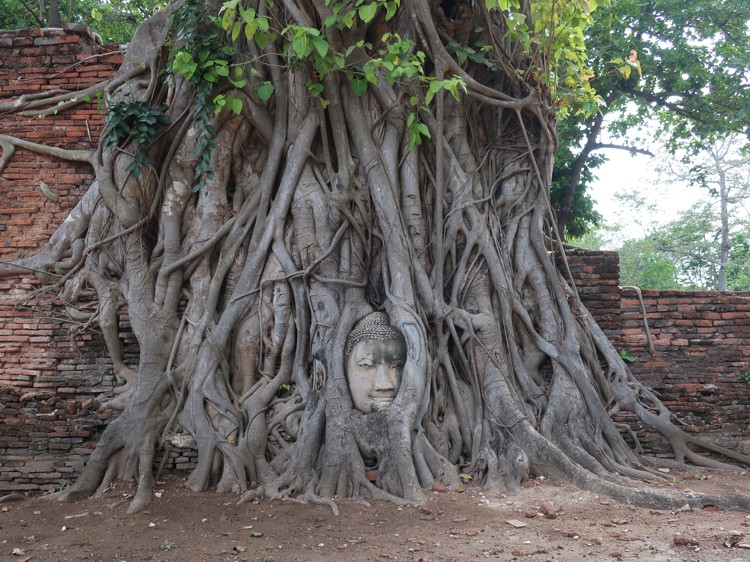
Wat Maha That
Ayutthaya: Wat Ratchaburana
This temple was built by Ayutthaya’s second king 594 years ago, named after his two elder brothers who fought to death over the throne. I don’t mean to be disrespectful but that story is pretty… amazing. What remains of this temple now is known for its large prang, and the mural hidden deeply in its cellar.
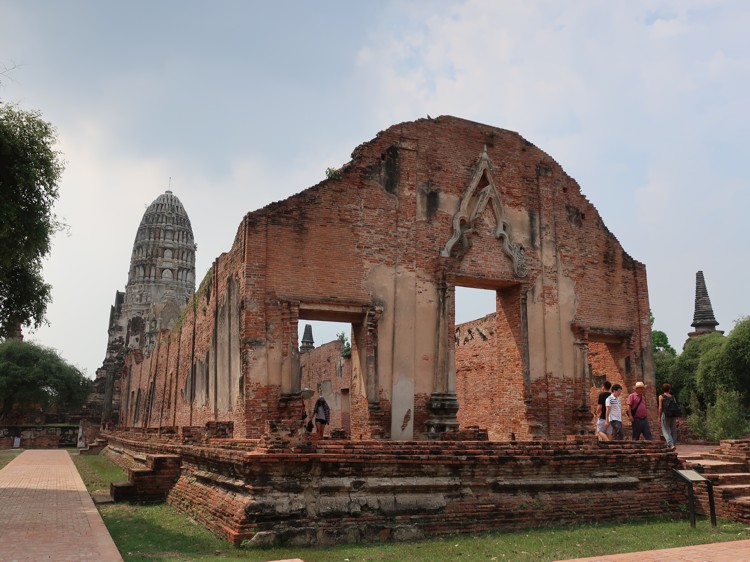
Wat Ratchaburana
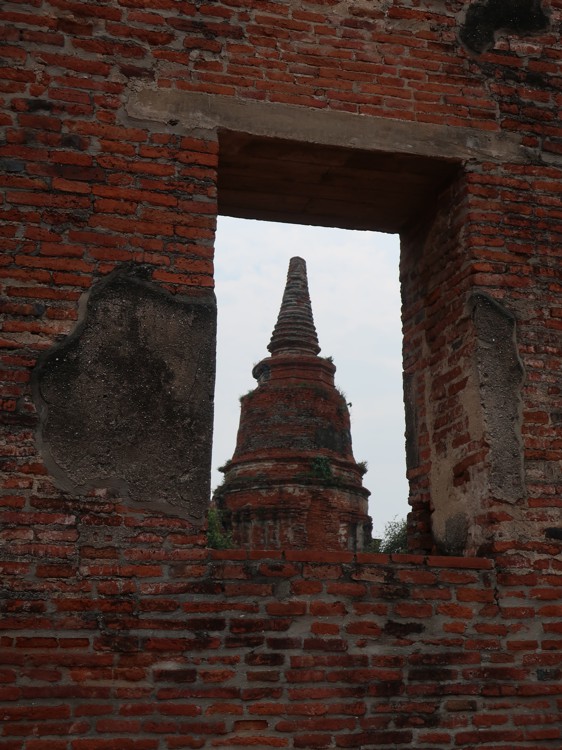
Wat Ratchaburana
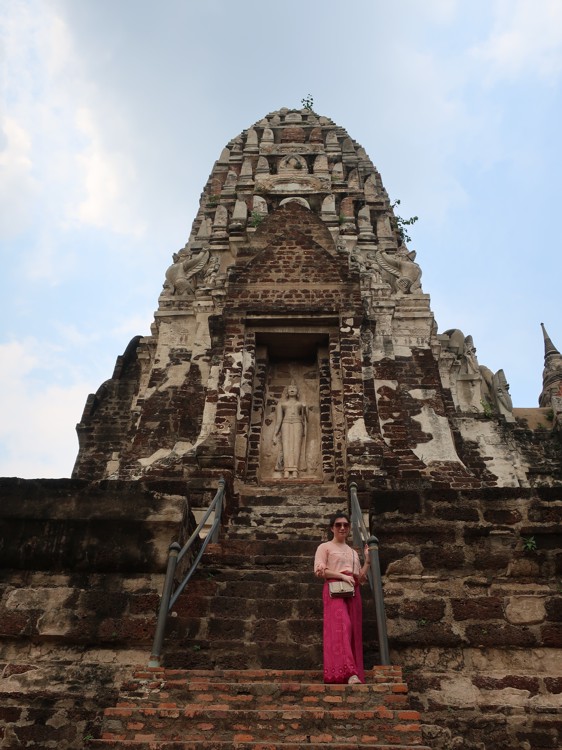
Wat Ratchaburana
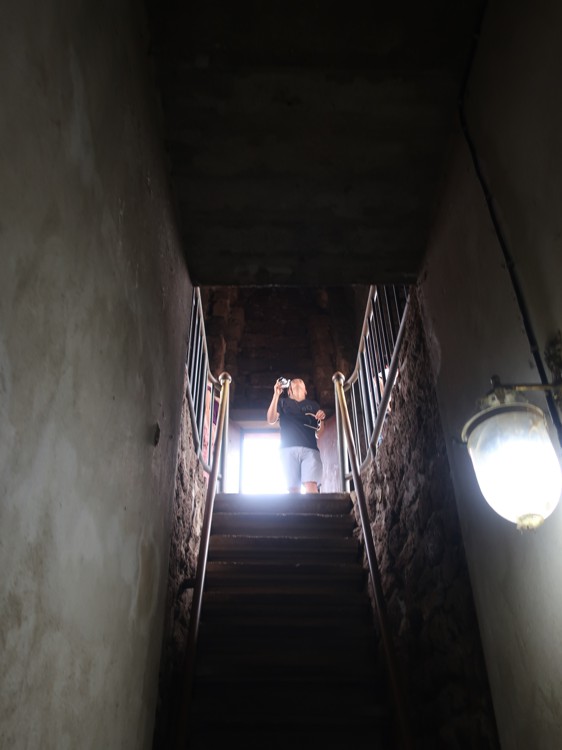
Wat Ratchaburana: View from the stairs down into the cellar
Ayutthaya: Wat Chaiwatthannaram
The third and final temple we visited sits just outside the city walls/moat to the southwest. It’s one of the most impressive in size, and relatively most intact temples. It was kind of cool to think that the ruins were still so neat to look at; we could only imagine how glorious it must have been back in the days.
So, this entire city is a UNESCO World Heritage site. Its many buildings, sculpture, and paintings are not exactly pristine after the war and hundreds of years of elements. Each temple’s entrance has several signs alerting visitors not to step or climb onto the buildings, touch the sculpture, etc. Even without such signage, it should be obvious to a cultured person how fragile everything is and how critical it is to be mindful of the invaluable cultural assets. Thus it pissed us off to see the tourists blatantly ignoring instructions and climbing all over the place. One guy even climbed onto a high pedestal, where a sitting Buddha image was missing, for a photo. How incredibly disrespectful! We took it upon ourselves to police these rude tourists and yelled at a few of them.
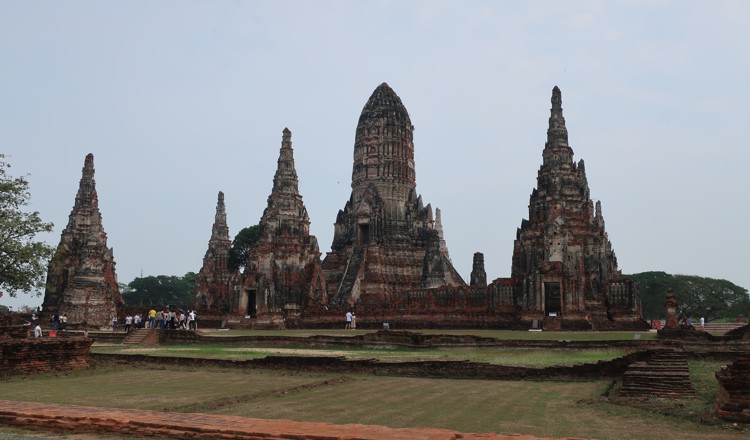
Wat Chaiwatthanaram
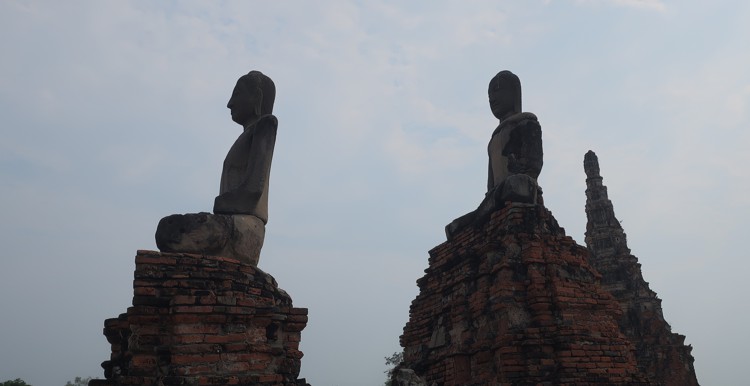
Wat Chaiwatthanaram
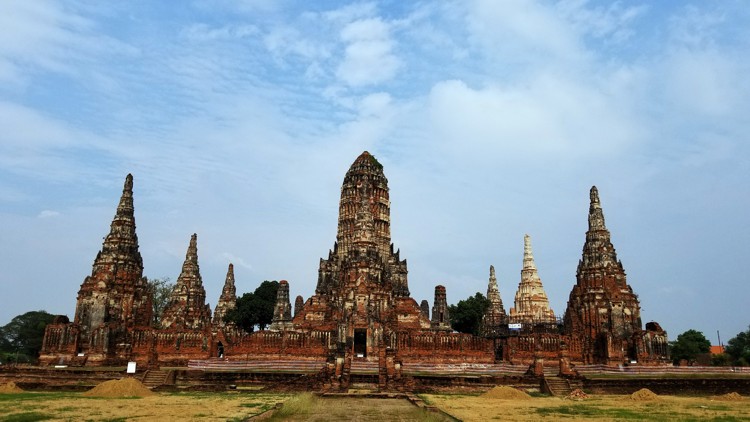
Wat Chaiwatthanaram
Ruay Goong Pao
It was a bit ironic that our Ayutthaya “day trip” was spent in Ayutthaya for merely two hours. I definitely would’ve preferred to see more. But we had to rush out of town for another big meal! Ruay Goong Pao was another local restaurant of interest that we learned from Mark Wiens. It was by the Chao Phraya River in a rather isolated neighborhood. Our driver was impressed and puzzled that we knew about such a place. He was even more impressed that I had a hand-written address of this place! Though judging by the amount of time he took to read it, my attempt at copying Thai script was probably not the best.
Ruay Goong Pao was a full-service restaurant, and their main attraction was goong pao, or roasted freshwater prawns. Priced by size and by weight, these were not ordinary shrimp! Ruay Goong Pao’s prawns were bigger than Red Lobster’s lobsters! What was perhaps more surprising… the meal was also pricier than one at Red Lobster. To be fair, though, these giga crustaceans were incredible and unlike anything else we’d had before.
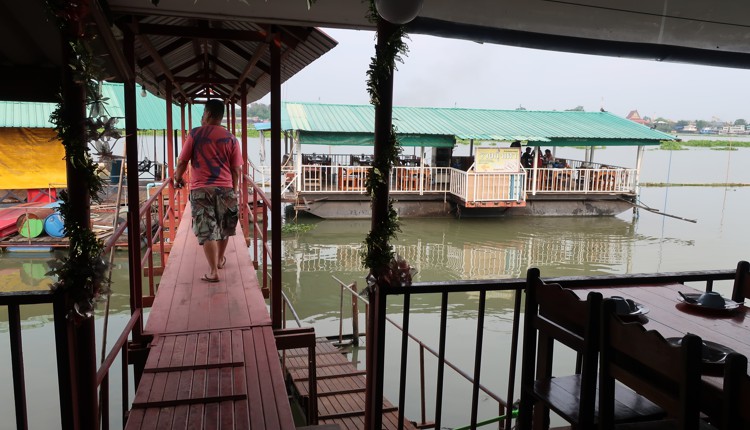
We dined on a floating platform, connected by a floating bridge, in the middle of a fish farm

Upon discussing what and how much to order, all four of us looked into our wallets and then at each other
“Um do you accept credit card?” Surprisingly, it was affirmative at this rural restaurant
It was a live case study of how credit card acceptance increased sales by a wide margin
The waiters laughed really hard
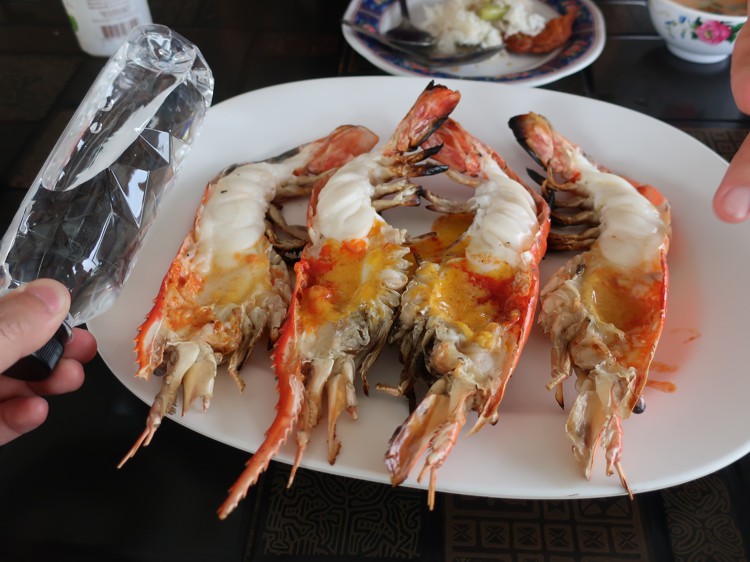
Water bottle next to the prawns for scale
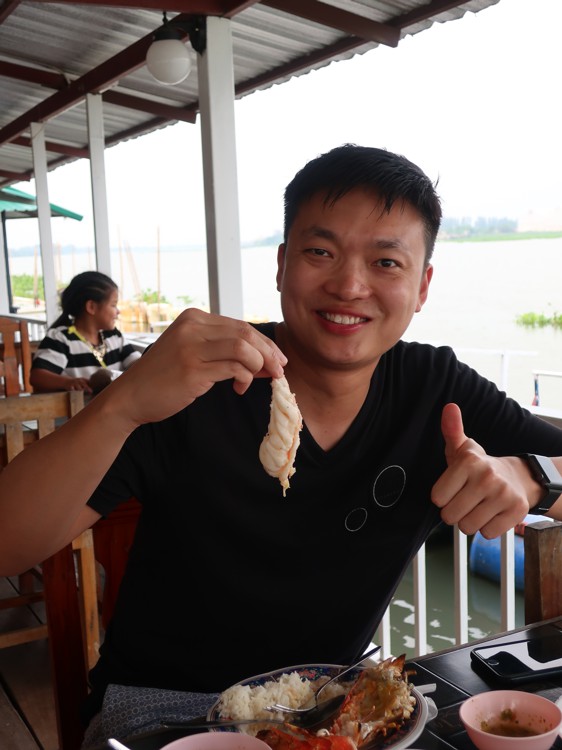
Chee Seng and his prawn meat
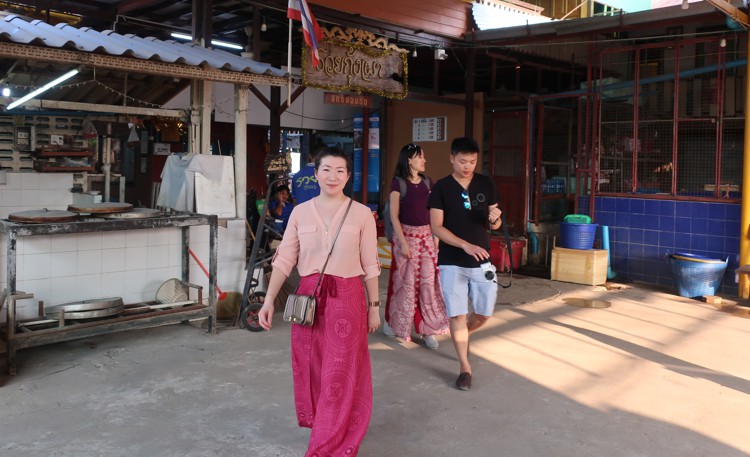
Happy gang with happy tummies heading back to Bangkok
Southeast Asia 2018 Index
- Peninsula City Hopping
- Pig Out 1/3
- Pig Out 2/3
- Pig Out 3/3
- Hong Kong Déjà Vu
- Unfinished Business in Singapore
- Exploring Kuala Lumpur
- Week-Long Birthday in Thailand
- Wats in Bangkok
- Bangkok Food Scenes
- Ayutthaya Road Trip on a Full Stomach
- Vacation Within Vacation on Koh Samui
- Farewell Thailand
CDMX 2022 (2/8) – Day of Teotihuacan Pyramids – Peter's Blog
September 1, 2022 at 6:22 pm[…] recorded Japanese emperor by several hundred years. Although visiting Teotihuacan felt similar to visiting Ayutthaya, another abandoned capital city, this Mexican UNESCO World Heritage site had been a ghost town at […]